Advertisements
Advertisements
Question
A parallel-plate capacitor having plate area 20 cm2 and separation between the plates 1⋅00 mm is connected to a battery of 12⋅0 V. The plates are pulled apart to increase the separation to 2⋅0 mm. (a) Calculate the charge flown through the circuit during the process. (b) How much energy is absorbed by the battery during the process? (c) Calculate the stored energy in the electric field before and after the process. (d) Using the expression for the force between the plates, find the work done by the person pulling the plates apart. (e) Show and justify that no heat is produced during this transfer of charge as the separation is increased.
Solution
Given :
Area, A = 20 `"cm"^2 = 2 xx 10^-3 "m"^2`
Separation , `d_1 = 1 "mm" = 10^-3 "m"`
Initial Capacitance of the capacitor ;
`C_1 = (∈_0A)/d_1`
`C_1 = (8.88 xx 10^-12 xx 20 xx 10^-4)/(1 xx 10^-3)`
`C_1 = 1.776 xx 10^-11 "F"`
Final capacitance of the capacitor :
`C_2 = C_1/2` (because `d_2 = d_1/2`)
(a) Charge flown through the circuit :
`Q = C_1V - C_2V`
`Q = (C_1 - C_2)V`
`Q = 1.776/2 xx 10^-11 xx 12.0`
`Q = 1.06 xx 10^-10 C`
(b) Energy absorbed by the battery :
`E = QV = 1.06 xx 10^-10 xx 12`
`E = 12.72 xx 10^-10 J`
(c) Energy stored before the process, `E_i = 1/2C_1V^2`
⇒ `E_i = 1/2 xx 1.776 xx 10^-11 xx (12)^2`
⇒ `E_i = 12.7 xx 10^-10 J`
Energy stored after the process, `E_f = 1/2 C_2V^2`
⇒ `E_f = 1/2 xx 1.776/2 xx 10^-11 xx (12)^2`
⇒ `E_f = 6.35 xx 10^-10 J`
(d) Work done, W = Force × Distance
= `1/2 xx (Q^2)/(∈_0A) xx 1 xx 10^(-3)`
= `1/2 xx (12 xx 12 xx ∈_0 xx ∈_0 xx 10^(-3))/(∈_0 xx 2 xx 10^(-3))`
⇒ W = 6.35 × 10−10 J
(e) Transfer of charge as the separation is increased
`ΔE = E_i - E_f`
W = 6.35 × 10−10 J
⇒ ΔE = W
APPEARS IN
RELATED QUESTIONS
A capacitor 'C', a variable resistor 'R' and a bulb 'B' are connected in series to the ac mains in circuit as shown. The bulb glows with some brightness. How will the glow of the bulb change if (i) a dielectric slab is introduced between the plates of the capacitor, keeping resistance R to be the same; (ii) the resistance R is increased keeping the same capacitance?
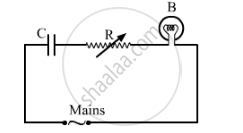
The electric field inside a parallel plate capacitor is E. Find the amount of work done in moving a charge q over a closed loop a b c d a.
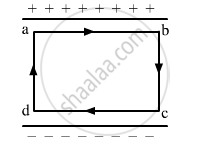
Figure 4 below shows a capacitor C, an inductor L and a resistor R, connected in series
to an a.c. supply of 220 V

Calculate:
1) The resonant frequency of the given CLR circuit.
2) Current flowing through·the circuit.
3) Average power consumed by the circuit.
If the capacitors in the previous question are joined in parallel, the capacitance and the breakdown voltage of the combination will be
A parallel-plate capacitor has plates of unequal area. The larger plate is connected to the positive terminal of the battery and the smaller plate to its negative terminal. Let Q, and Q be the charges appearing on the positive and negative plates respectively.
The following figure shows two capacitors connected in series and joined to a battery. The graph shows the variation in potential as one moves from left to right on the branch containing the capacitors.
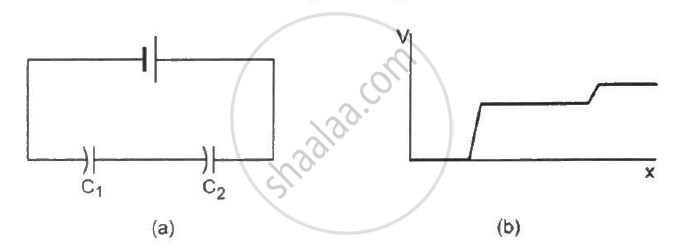
A parallel-plate capacitor having plate area 25 cm2 and separation 1⋅00 mm is connected to a battery of 6⋅0 V. Calculate the charge flown through the battery. How much work has been done by the battery during the process?
The plates of a capacitor are 2⋅00 cm apart. An electron-proton pair is released somewhere in the gap between the plates and it is found that the proton reaches the negative plate at the same time as the electron reaches the positive plate. At what distance from the negative plate was the pair released?
Three capacitors of capacitance `C_1 = 3muf` , `C_2 = 6muf` , `C_3 = 10muf` , are connected to a 10V battery as shown in figure 3 below :
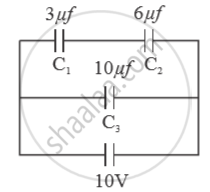
Calculate :
(a) Equivalent capacitance.
(b) Electrostatic potential energy stored in the system
An ac circuit consists of a series combination of circuit elements X and Y. The current is ahead of the voltage in phase by `pi /4` . If element X is a pure resistor of 100Ω ,
(a) name the circuit element Y.
(b) calculate the rms value of current, if rms value of voltage is 141V.
(c) what will happen if the ac source is replaced by a dc source ?
Capacitors connected in series have ______
The equivalent capacitance of the combination shown in the figure is ______.
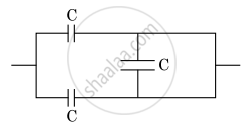
Two charges q1 and q2 are placed at (0, 0, d) and (0, 0, – d) respectively. Find locus of points where the potential a zero.
Two equal capacitors are first connected in series and then in parallel The ratio of the equivalent capacities in the two cases will be ______.
A capacitor of capacity C1 is charged to the potential of V0. On disconnecting with the battery, it is connected with an uncharged capacitor of capacity C2 as shown in the adjoining figure. Find the ratio of energies before and after the connection of switch S.

Three capacitors of capacitances 2 pF, 3 pF and 4 pF are connected in parallel. What is the total capacitance of the combination?
